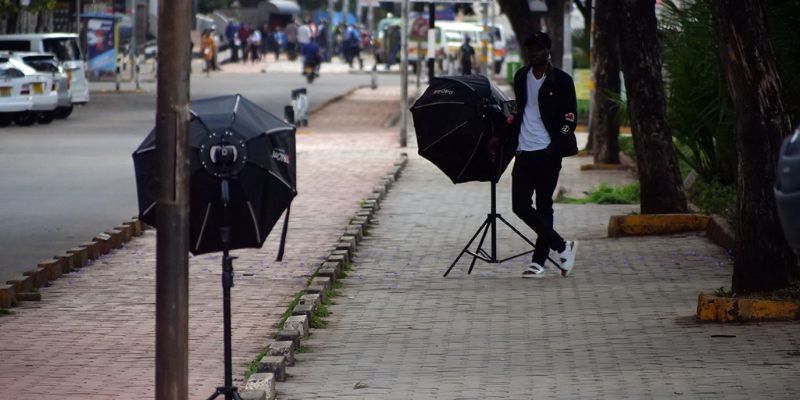What happens when a new idea grows up, and grows old?
There is drama in the Uganda parliament, where a statutory committee is bringing to light several truly amazing revelations regarding over twenty years of the effects of the reforms to Uganda’s banking sector.
Working from a report received from the Auditor-General, the committee, known as the Parliamentary Committee on Commissions, Statutory Authorities and State Enterprises (COSASE), is building a picture of the inside story of how a slew of banks came to be variously taken over, shut down and/or sold off.
Starting with Teefe Trust Bank in 1993, a cluster of institutions fell one after the other: Uganda Commercial Bank (1998/2001), International Credit Bank Ltd (1998), Greenland Bank (1999), Co-operative Bank (1999), National Bank of Commerce (2012), Global Trust Bank (2014).
The committee wants the details on how Bank of Uganda came to the decision to close down any given bank, and then the manner in which such a decision was carried out.
Apart from being unable to demonstrate any kind of procedural rigor, central bank officials have not been able to show the terms of reference for the acts of dissolution; the full audited accounts of the wound-up banks; the location of seized bank title deeds that have never – decades after the closures- been disposed of; the inventory of some of the banks’ assets; and handover reports. In one case, it was discovered that they had allowed an appointed liquidator to dispose of a seized banks assets at a 93% discount, granted them immunity, and fully conceded to the company’s demand that their agreement be governable by UK law only.
The committee wants the details on how Bank of Uganda came to the decision to close down any given bank, and then the manner in which such a decision was carried out.
In the face of this flood of damning testimony, one hard-pressed Central Bank functionary found himself blurting out the assertion that there was “no need for an inventory” when winding up one of the institutions.
But what may be missed in this avalanche of details is the fact that the banks concerned all had one common thread: they were either locally owned, owned by Africans from elsewhere on the continent, or were statutorily established to service locally owned commercial activity.
That, actually, is the real story.
The immediate trigger for all this drama has been the 2016 sudden shut down, sell off and dissolution of Crane Bank, perhaps until then the jewel in the crown of a business empire owned by the flamboyant Sudhir Ruperelia.
That this probe comes now, has led many to speculate that perhaps the committee is working at the behest of the Crane’s erstwhile owners as part of a vendetta against the central bank officials involved in the closure operation. Certainly, Uganda’s media –and in particular, the online community- has suddenly become awash with stories that take a strong interest in the operations of Crane Bank’s eventual buyer, as well as the character and reputation of the various Central Bank high officials.
Whatever the Attorney General’s impetus, his office found itself looking at the entire body of shutdowns undertaken by the central bank, since it was “reset” by the passing of a new Bank of Uganda Act in 1993, to replace the initial 1969 law establishing it.
The audit has become an impromptu review of the entire financial services aspect of Uganda’s now twenty-five year old liberalization policy, which was seen as groundbreaking in some quarters, at the time of its inception.
Various shades of opinion will continue to debate the policy, but twenty years down the line, one outcome is clear: there are virtually no banks owned by Ugandan Africans left in the country. Coincidence? Perhaps.
One effect of this had has been to create the impression that “foreign” banks are more “professionally managed” than the home-grown ones. But if that were really the case, then the West’s great crash of 2008 would simply never have happened. There are enough instances of foreign banks getting caught and being fined in other jurisdictions. In fact some of the foreign banks facing disciplinary action in South Africa and the UK (over cheating on the inter-bank lending rates) are banks that also have representation in Uganda. Why would banks choose to behave well only in Uganda, and then decide to misbehave elsewhere?
One effect of this had has been to create the impression that “foreign” banks are more “professionally managed” than the home-grown ones. But if that were really the case, then the West’s great crash of 2008 would simply never have happened.
There will always be the temptation for some level of “cheating” among banks. After all, it is a business about using money to make a lot more money. This is rarely a saintly pursuit. For example ABSA of South Africa (which used to be Bankcorp, and then was bought by Barclays who then took on the name) was discovered to have received an unexplained payout of about $166 million from the then apartheid government. They are still refusing to pay it back, even after the South Africa Ombudsman said they should.
This is not to suggest that all African Ugandan operators were innocent of any form of malpractice or incompetence. However, the authorities have always had various options at their disposal for dealing with this. The most common is for the regulatory authorities to impose heavy fines, remove errant directors, and in some cases also pump cash into the ailing culprit.
Like the “sin bin” concept in rugby, another equally rough and tumble activity, the object is to accommodate the energy of the game, while allowing it to proceed as safely as is manageable, not to kill off its spirit.
What the Uganda banking authorities can be accused of doing is to have decided to target only one category of player, and then have only one “remedy”: permanently eject them not just from the game, but all future tournaments, and also confiscate their equipment.
This is like a police traffic operation in which only one brand of car gets stopped and examined. Naturally, some offenders will be found. What then happens is that the driver is fined, the car’s number plates are removed, the passengers thrown out, the driver jailed, and the vehicle itself seized.
But this is by no means the focus, or stated interest of the parliamentary committee, but perhaps it should be.
It may offer a different perspective from which to understand what is now going on at the Uganda parliament. Beyond the forensics, what was the intent?
Perhaps the real purpose of the 1990s reforms to the banking system was to bolster the central bank’s capacity to get native capital out of the market and prevent the emergence of an autonomous business class.
If that were to be the case, it would come as no surprise to any student of Uganda’s real history: there is a precedent for this. In fact, it is a very old story.
Perhaps the real purpose of the 1990s reforms to the banking system was to bolster the central bank’s capacity to get native capital out of the market and prevent the emergence of an autonomous business class. If that were to be the case, it would come as no surprise to any student of Uganda’s real history.
In the book: The Social Origins of Violence in Uganda, historians Kasozi, Nakanyike, and Sejjengo list a whole body of measures aimed at preventing the emergence of such a class:
“As early as the 1890s the colonial state began excluding Africans from the processing and marketing stages of production- the most lucrative in the colony’s commodity-based economy. Kabaka Mwanga tried to buy a saw-mill but was prevented by the authorities from doing so. In 1909, Governor Bell ordered the destruction of hand-gins, which handled some thirty-five per cent of cotton produced in the colony…. In 1913, Kina Kulya Growers’ Society of Ssingo Farmers was discouraged from marketing its own cotton. The Cotton Rules of 1918 restricted middlemen from operating within five miles of a ginnery, all of which were owned by foreigners. The Buganda Growers’ Association tried to market its own cotton in 1923 but was discouraged by the government. Four years later, Sepiriya Kaddumukasa tried to erect a ginnery on his own land but was refused a licence. In 1920 the Buganda Cotton Company was prevented from ginning and marketing its own cotton. In 1932, when the Uganda Cotton Society tried to obtain high prices by ginning and marketing its own cotton and “eliminating the Indian middleman,’ it was not allowed to do so. In the same year, the Native Marketing Ordinance (Coffee) curtailed the buying activities of African businessmen.”
The purpose of the colonial economy was to privilege British originated commerce over the local indigenous economy. Britain’s Chillington Tool Company alone, for example, all but wiped out indigenous ironworking by the 1940s, by dumping large amounts of cheap, mass-produced hoes on the Uganda market.
in Uganda, Western economic policy faced two obstacles to its aim of preventing–or at least endlessly delaying- the aggregation of African capital.
First was that the politics of the colonial conquest of Buganda meant the British had to concede vast tracts of land to primarily the Anglican African warlords that helped them overthrow the two resisting Kings, Kabalega and Mwanga. What is more, they had to concede laws restricting ownership of such land to black Africans only. Buganda, and Tonga were thus the only two colonial territories in the entire jurisdiction of the British Empire, in which native land claims were legally upheld, after a fashion, in the new order. As Africans entered commerce (or tried to) these land holdings began to come into play as collateral for loans.
The purpose of the colonial economy was to privilege British originated commerce over the local indigenous economy. Britain’s Chillington Tool Company alone, for example, all but wiped out indigenous ironworking by the 1940s, by dumping large amounts of cheap, mass-produced hoes on the Uganda market.
The second was the raft of “nationalist” measures put in place as an expression of the Independence movement. For example, an African Trade and Development Fund (ATDF) had been established in the late colonial period to provide a form of “affirmative action” for all those earlier generations of deliberately disadvantaged Africans. Even without privately-owned African banks, the state had established the Uganda Commercial Bank, envisioned as a cheap reliable lender to commercial African farmers, as well as enabling the co-op movement –battling on from the 1920s- to establish its own bank.
Prior to that, Kasozi tells us:
“The banking system was controlled by British- and India- based banks…. They did not lend to many Africans, although they operated on an accumulation of African peasant savings, which was lent to foreign businessmen to further exploit national resources. In 1949 [anti-colonial leader] Musaazi called for the use of peasant [savings] to create an agricultural bank. It was not until later that such a bank, the Uganda Credit and Savings bank, was floated. By that time Africans had been left so far behind in business expertise that they could not compete with Indo-Pakistanis and Europeans. Africans could not participate in the lucrative wholesale trade because the colonial government issued wholesale licenses only to traders with permanent buildings of stone and concrete: very few Africans had such buildings.”
The Uganda Credit and Savings bank is what became the Uganda Commercial Bank. At its peak, it operated well over half of all bank branches in the country and held 50% of all commercial bank deposits. The South African Standard Bank would be the one to buy it in the great 1990s sell-off now being picked apart in parliament. Standard went on to buy Grindlays Bank, which had been part-nationalised in the 1960s, and merged it with its new concern.
The evidence from parliament suggests that some looting and asset-stripping has taken place. Even if that were true, I do not think it would have been the real goal. The assertion bears repeating: the purpose was to drive native African capital out of the banking sector and to do so in such a way that it would find it hard to regroup and try and make another entry.
The story goes further back still: a less-formally recorded narrative exists of how it was common practice under colonial education, to deny opportunities for advancement to pupils coming from the more well-off families, often associated with the aristocracy. The method was to shunt them into courses aimed at closing off their possible qualification to tertiary education. At the same time, such opportunities were left open to African pupils of other backgrounds.
A few such children of the better-off therefore gained their higher education at the own parents’ expense where affordable, after leaving the formal colonial system, and studying abroad.
The purpose added to the earlier one of preventing or delaying the aggregation of native capital for as long as possible. The idea seemed to be to prevent also the possibility of the owners of any such aggregated capital gaining personal access to new knowledge and skills.
This also explains the Western (read British) hostility to the post-Amin Uganda National Liberation Front (UNLF) coalition government whose economic protectionist policies were aimed at boosting local manufacturing capacity. The open British support to the military junta that overthrew the coalition government in May 1980, and the Milton Obote regime it helped back into power, brought that aspiration to an end.
The more recent, two-decade legislative siege of original African land holdings that prevents them from using their holdings to raise capital, is an additional measure towards this goal.
The World Bank was certainly most enthusiastic about the new Bank of Uganda legislation. On the 14th May 1993, the very same day the Act passed into law, a team from the World Bank landed at Entebbe airport and were driven straight into a meeting with the then bank governor. There have been World Bank associated technocrats based in the Bank of Uganda building ever since.
Although owned by a Ugandan citizen, it cannot be said that this was the reason Crane Bank was also closed. Evidence used by Bank of Uganda to shut it down suggests it was more of a conduit for money laundering, leaving a large hole in the new banking system, and threatening its stability. The World Bank would not have liked this. Besides, the bank’s own attitude towards domestic capitalists was far from friendly.
The former Crane Bank headquarters building was on Kampala’s high street, next to a parking lot that was created for it over twenty years ago. That space used to be occupied by a set of modest African-owned shops, one of which was known as Kayondo Shoemakers. The abovementioned ATDF bought the building in the early 1960s, and leased it out for long-term purchase to Kayondo and three others who became the first black Africans to own businesses on Kampala’s main street, and the “last man standing”, just about, of local manufacturers, by the late eighties.
They would occupy it for thirty-five years, religiously paying in their mortgage instalments to the Fund. That is until 1997, when the ATDF was targeted for divestiture as part of the Ugandan government’s implementation of IMF/World Bank –directed privatisations, which were carried out with all the proverbial passion of the neophyte. Meera investments, a sister company to Crane Bank, put in a bid for it, and the matter eventually ended up in the High Court.
In May 2000, within less than an hour of winning that High Court case, Crane Bank’s owners had the shops demolished.
The very emptiness, right next to a fallen example of the neo-liberal banking adventure, bears witness to a history the folly of denying to others what you cannot hold on to yourself.








